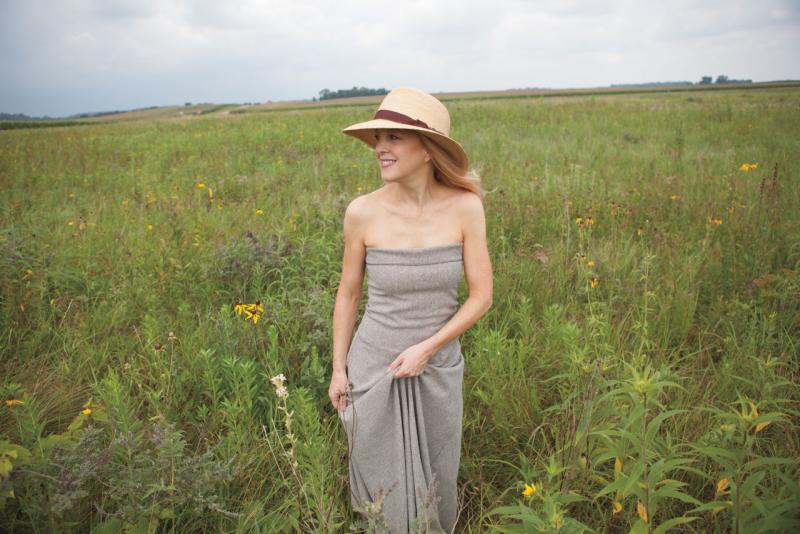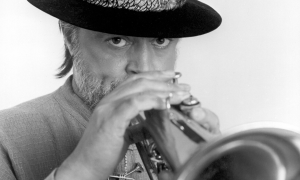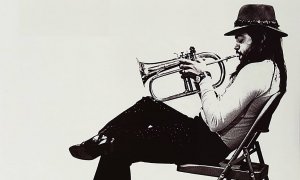Home » Jazz Articles » Catching Up With » Maria Schneider on "The Thompson Fields"
Maria Schneider on "The Thompson Fields"

What I love about jazz is that the players can shape my music in their own highly personal ways
All About Jazz: Could we say that The Thompson Fields is your most intimate work until the now?
Maria Schneider: I would say that this album goes to the heart of who I am. That's tied so tightly to the landscape of where I come from—the open prairie.
AAJ: What's the earliest memory you reflected upon this album?
MS: Maybe not a specific memory—but the sense of "place." And that place surely impacted me from the very beginning. Long horizons, big sky, open fields, birds, nature—the outdoors.
AAJ: Would you say this is a nostalgic or an evocative album?
MS: Most definitely, although much of my other music is also tied to my past. I've always really loved my music to evoke something personal beyond just the music. I see music as being a conduit for humans to share their personal perspective on life.
AAJ: You have a strong connection with the nature, as it is shown in this work. How does city life affect to you?
MS: Cities have come to be an important aspect of the environment. It's important for people to understand that our cities are inhabited by a number of species, birds, bugs—and that we need to take care to make our cities habitable not only for us. I rediscovered the love of birding in Central Park in New York City. During migration in April and May, Central Park becomes the 12th best birding spot in the United States. You can see an incredible array of species. It's quite remarkable, and I've found a great community of people in New York that love the natural world as much as I do. That being said, I love to get out into the country. It's the noise of the city that starts to really make me feel like running for the hills. I think noise pollution contributes a great deal to stress for those that live in cities.
AAJ: Do you develop music ideas, which come already from music? Or do you pick them from motivation around you?
MS: I look for sound—sound just out of nowhere. But as I start working on musical ideas, those sounds often very quickly attach themselves to memory or experience. Before I know it, that experience is shaping the composition. But I don't generally start a piece by wanting to write about some specific place or experience.
AAJ: How do you translate life to harmony?
MS: I can't tell you how this works, although I have come to understand that the relationship of half steps to whole steps in the scale contribute a great deal to the emotionality of that scale. But for me, generally it's a mystery as to how something I write comes to depict something specific from life. But when it happens, it's undeniable. And when I feel that strong connection between music and something personal, generally it translates to other people too in a similar way. To me, that's the magic of music. It's just crazy. And how can I be a composer and not even understand how it works? I understand some things, but much of it is a mystery. And maybe that's what I love. It'll be an endless search—like life, it's likely to leave us with endless questions to the very end. For someone like me, who is impatient to have answers, it can be difficult.
AAJ: Eight years is a long time to define the main evolution points of your compositions for your jazz orchestra. What would be your highlight of this album and the musicians that make it to come alive in comparison with the previous one?
MS: It's very difficult to compare. They both have music that feels highly personal. I do feel that the band has just kept maturing over the years, and that the level of expression from the players, the willingness to take risks, to trust one another, is at an all-time high. These musicians are just so open, and I love that they take my music in new directions every single time. I think they've come to trust in my openness for that risk-taking, too. Every performance is a true collaboration. As far as talking about my compositions, each one is kind-of like a baby. It's hard to compare. Furthermore, it might take me a few years to get enough distance to be able to look back with some distance to judge and compare. I know that I can now see things about my early development as a composer that I would have not recognized at the time.
AAJ: How was the process of composing and arranging de repertoire? Did you make lot of changes along the years?
MS: Yes, I almost always do some editing. As we perform new pieces, I'm always finding little things to adjust in the orchestration or in the form. A Potter's Song went through huge changes to come into its final form. I often document the writing of music on my ArtistShare website for participants. Those people can see how much work it is to come to my final version by watching the videos. Sometimes I'm probably appearing quite stressed. I am a very slow writer. Things have to almost grow in me organically. It requires patience and diligence all at the same time.
AAJ: What was the main challenge of arranging "Walking by Flashlight," from Winter Morning Walks (ArtistShare, 2013) for your Jazz Orchestra?
MS: It actually came quite naturally. I realized that this piece is entirely different than my other music because it was originally a song with words. That brought me to write in a much simpler way, at least for this particular poem by Ted Kooser. I just finished arranging yet another song from that album for my band. I loved making something for my band that was just so delicate and simple, as well as "short."
AAJ: There is something curious that happens to me when I think about you. If your name comes to my mind I think "Who is she? She is a composer... a jazz musician: she plays the orchestra." Have you got the feeling that your orchestra is your instrument?
MS: Absolutely. It is my instrument. And what I love about jazz is that the players can shape my music in their own highly personal ways, and in the end, it is a great artistic collaboration. I try to leave room for this to happen—to leave space for them to experiment. I love that aspect. I couldn't musically live without that at this point.
AAJ: Your music is 3D: geometrical forms, colours and emotions. Which order are they created in? MS: These things all come at once, or separately, or at their own pace, on their own when they decide to come, if they decide to come. I just try to catch them, and shape them all to come together in a cohesive whole. I try to coax it along. I work very hard to try and help this process along. I have all control and no control at the same time. So I can't tell you what order things come in. Sometimes I honestly don't know what force steers this ship. I just have to sit there, work hard, and be ready and alert. It's hard to describe this process. If I could easily describe it as step 1, 2, 3, I would have more confidence and would never panic that I don't have more music inside of me. But I do panic, because I know in my heart, as hard as I work, much of this is a mystery, and I often feel like I have no hand in it whatsoever.
Tags
About Maria Schneider
Instrument: Composer / conductor
PREVIOUS / NEXT
Maria Schneider Concerts
Support All About Jazz
 All About Jazz has been a pillar of jazz since 1995, championing it as an art form and, more importantly, supporting the musicians who make it. Our enduring commitment has made "AAJ" one of the most culturally important websites of its kind, read by hundreds of thousands of fans, musicians and industry figures every month.
All About Jazz has been a pillar of jazz since 1995, championing it as an art form and, more importantly, supporting the musicians who make it. Our enduring commitment has made "AAJ" one of the most culturally important websites of its kind, read by hundreds of thousands of fans, musicians and industry figures every month.




















